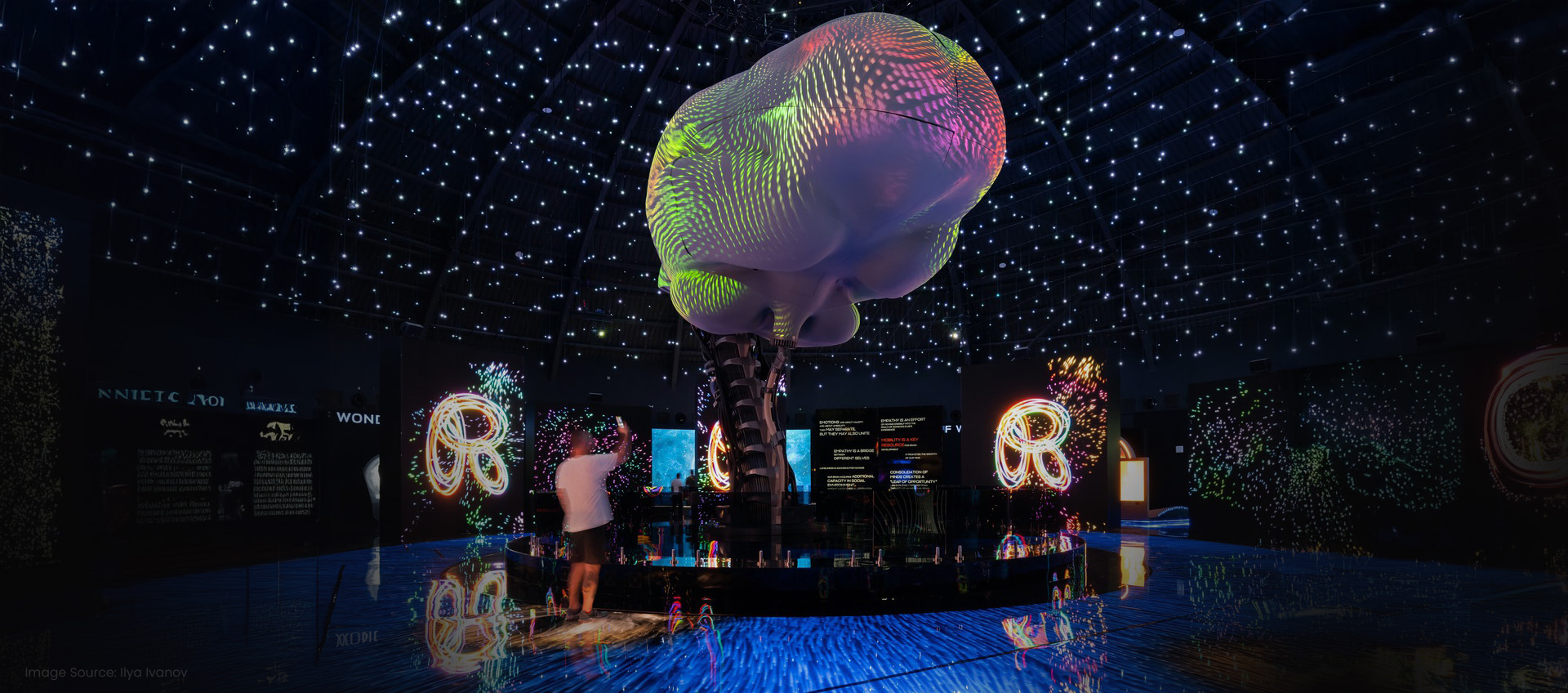
Illuminating the Future: Exploring the Fascinating World of Holographic Projections
In a dimly lit room, a figure flickers into view—a shimmering ghost of light, alive with possibility. Holographic projections, once the stuff of sci-fi legend, have quietly infiltrated our world. But beyond the fanfare of high-tech ads and interactive displays, there lies a deeper story—a story about how light is sculpted, bent, and woven into experiences that challenge our perception of reality. Let’s step off the beaten path and unravel how these glimmering visions redefine not just industries, but how we engage with the world.
Table of Contents
- Hologram Fans
- Hologram Boxes
- Hologram Portals
- Hologram Walls
- Tabletop holographic displays
- Interactive Holographic Displays
- Mixed Reality Holographic Displays
- Hologram projection mapping
- Holographic Kiosks
- The Future Ahead
- Challenges to Surpass

Hologram Fans
Hologram fans are one of the most popular and visually striking applications of holographic technology. These devices use high-speed spinning LED blades to create 3D images that appear to float in mid-air. Retailers, event organizers, and marketers often use hologram fans to grab attention and showcase products or logos in an engaging way. Compact and affordable, they’re easy to set up and deliver high-quality visuals. The future of hologram fans could include gesture-based controls, allowing users to interact with the visuals for a more personalized experience.
Uses: Retailers and event organizers use hologram fans to create visually captivating displays that engage customers and passersby.
Benefits: Hologram fans are relatively affordable and easy to set up compared to other types of holographic displays. They also consume less space, making them perfect for businesses with limited floor area. Additionally, they are energy-efficient and can produce high-quality visuals that catch the eye.
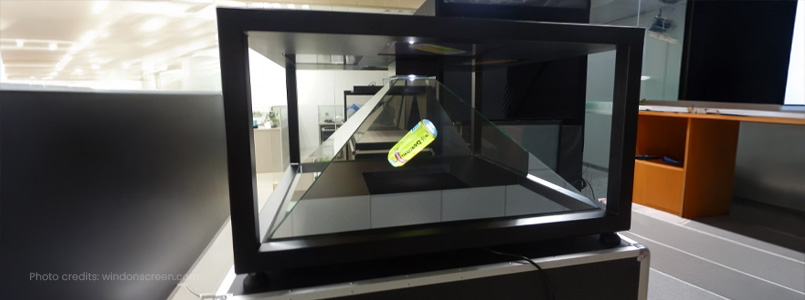
Hologram Boxes
Hologram boxes, or holographic display cases, are another captivating use of holography. These devices showcase 3D visuals within a contained, transparent environment, creating the illusion of objects floating or moving inside. They’re commonly used in museums, product launches, and educational settings to highlight artifacts, prototypes, or designs with incredible detail. Their ability to work in brightly lit environments makes them a reliable choice for various applications. With advancements in technology, hologram boxes could soon include touch-sensitive displays, making the experience even more interactive.
Uses: Hologram boxes are commonly used in museums, exhibitions, and product launches to showcase detailed models or artifacts. They’re particularly useful when you want to give an item the appearance of floating in mid-air without any physical strings or supports. For instance, a company might use a hologram box to show off a new product design in a way that feels futuristic and high-tech.
Benefits: One of the key advantages of hologram boxes is their versatility. They can be placed on countertops or tabletops and still deliver a visually impressive experience. Furthermore, these boxes work well in bright environments, making them perfect for use in retail spaces or trade shows.
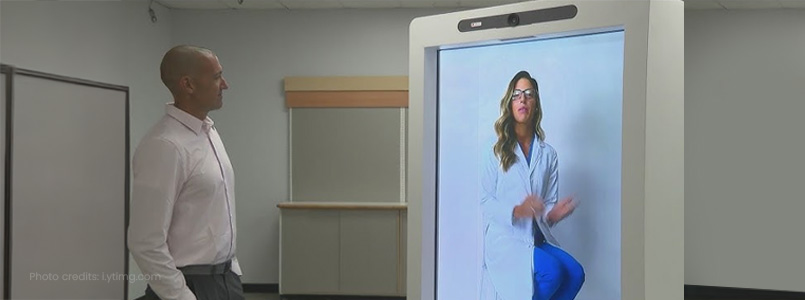
Hologram Portals
Hologram portals take the concept of holography to the next level. These life-sized displays project 3D visuals that simulate the presence of a person or object, creating an almost tangible experience. Often used in events, conferences, and performances, hologram portals bring remote speakers or entertainers “on stage” as realistic projections. They offer an innovative way to connect with audiences, making virtual appearances feel more authentic. In the near future, these portals may evolve to allow live, interactive conversations with holographic avatars, enhancing their utility.
Uses: Hologram portals are often used in events, conferences, and performances. They allow speakers, performers, or celebrities to appear "live" at a venue without actually being physically there. For example, a musician who cannot attend a concert in person may use a hologram portal to appear as a 3D projection for the audience.
Benefits: Hologram portals make remote interactions feel more realistic and engaging, providing an experience that is far beyond typical video calls or live-streaming events. Viewers feel as though the person or object in the portal is truly in the room with them, creating a more immersive experience.

Hologram Walls
Hologram walls are large-scale displays that transform entire surfaces into 3D storytelling platforms. Using advanced projection techniques and transparent screens, these walls can showcase animations, videos, or information on a grand scale. They are often seen in museums, corporate spaces, and entertainment venues, offering an immersive experience for large audiences. Hologram walls are ideal for group settings and can integrate with sound and lighting systems for added impact. The integration of artificial intelligence could make these walls adaptive, tailoring content based on audience preferences or behaviors.
Uses: Hologram walls are used for presentations, exhibitions, or brand storytelling. In a retail environment, these walls might be used to display product animations or run advertisements in a dynamic and visually engaging way. Museums use them for exhibitions that tell the story of an event or showcase a collection of items with a rich, immersive background.
Benefits: These walls can be enormous, allowing for highly immersive, large-scale displays. With the right setup, hologram walls can take advantage of the full environment, blending light, sound, and visual elements for an unforgettable experience. They’re ideal for group settings and public spaces.
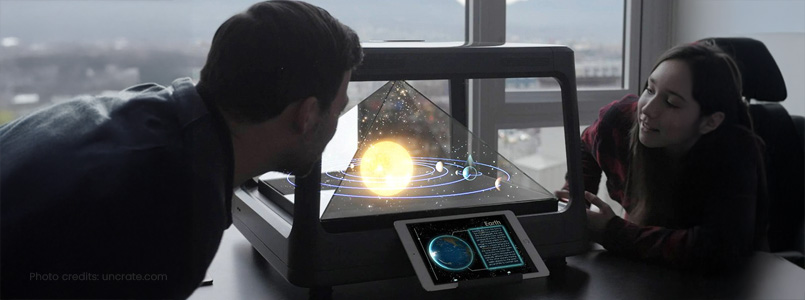
Tabletop Holographic Displays
Tabletop holographic displays are compact and versatile devices designed for personal or small group use. They are widely used by architects, designers, and educators to present models, explain concepts, or showcase products in 3D. These displays are portable, easy to use, and offer detailed visualizations, making them an excellent choice for presentations and learning. Future enhancements may include voice recognition and gesture controls, which could make tabletop holographic displays even more engaging and user-friendly.
Uses: Tabletop holographic displays are particularly popular in design studios, architectural firms, and classrooms. Designers can use them to present prototypes or architectural models in 3D, giving clients or students a better understanding of the product.
Benefits: These displays are compact and easy to transport, making them a great choice for meetings or classroom settings. Despite their size, they can still deliver high-quality, detailed 3D visuals that engage the viewer and provide a more interactive experience than traditional 2D displays.
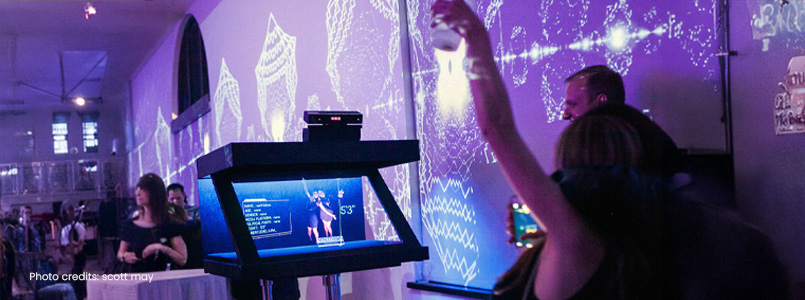
Interactive Holographic Displays
Interactive holographic displays take things a step further by allowing users to interact with holograms through touch, gestures, or voice commands. These displays are especially useful in healthcare for surgical planning, in retail for virtual try-ons, and in education for interactive learning experiences. By bridging the gap between the physical and digital worlds, they offer a highly engaging way to present information. The next generation of these displays could adapt content to individual users through AI, making interactions more tailored and intuitive.
Uses: Retailers use interactive holographic displays to allow customers to "try on" products virtually or view 3D models of items before making a purchase.
Benefits: Interactive holograms enhance user engagement by allowing them to control the content. This type of display provides a more personalized experience, enabling viewers to customize what they see and how they interact with the projection.
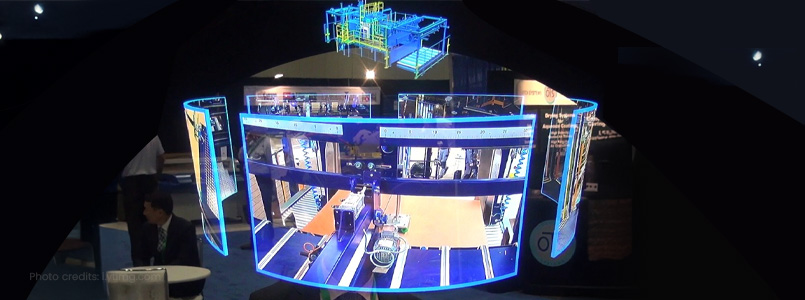
Mixed Reality Holographic Displays
Mixed reality holographic displays combine elements of augmented and virtual reality to blend digital content seamlessly with the physical world. This technology allows users to interact with holograms in real-world settings, making it ideal for training simulations, immersive storytelling, and innovative marketing campaigns. By merging physical and digital elements, mixed reality offers endless creative possibilities. Lightweight mixed reality headsets in development could make these systems more accessible, transforming how we interact with holographic content.
Uses: MR holographic displays are popular in training, education, and entertainment. For example, they’re used in simulations where users can interact with both physical and virtual elements. Medical professionals might use MR to practice surgeries, while gamers could experience fully interactive, immersive environments.
Benefits: Mixed reality offers an interactive and immersive experience that both enhances and augments the real world. These displays can be used for a wide variety of applications, from medical training to architectural design.
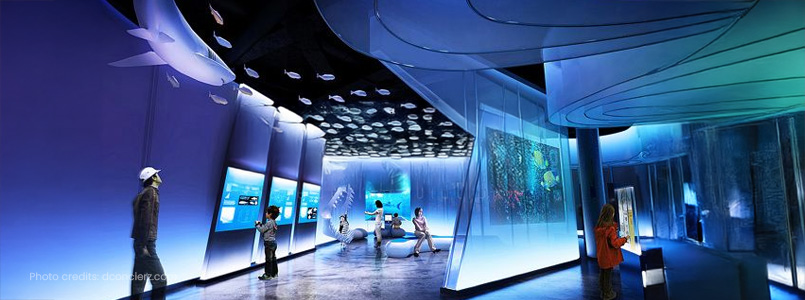
Hologram projection mapping
Hologram projection mapping is a technique that uses holograms to project visuals onto irregular surfaces like buildings, sculptures, or other structures. This method turns static objects into dynamic, interactive displays, creating stunning visual effects. Commonly used in concerts, theater productions, and public art installations, projection mapping provides a unique way to engage audiences without altering physical environments. Future advancements could enable projection mapping to respond to real-time events, making displays even more captivating and dynamic.
Uses:Hologram projection mapping are a popular choice in concerts and theater performances to create dynamic stage effects. They are also used in public art installations to engage audiences in urban spaces and corporate events for impactful storytelling and branding.
Benefits: Hologram projection mapping offers creative freedom where they turn any surface into a canvas for holographic art. They create a lasting impression on viewers, does not alter the physical space permanently. They are scalable as they works on both small objects and large structures like buildings.
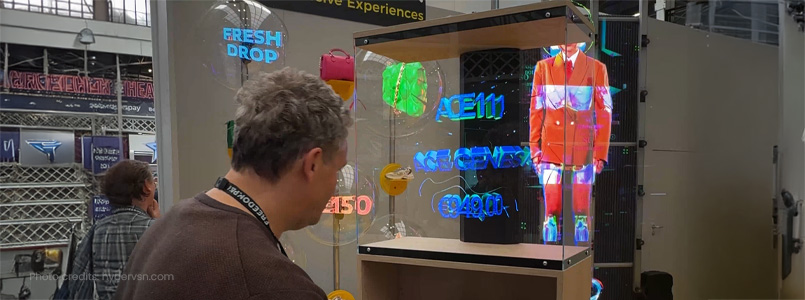
Holographic Kiosks
Holographic kiosks represent a new wave of self-service technology. These standalone systems project holograms to provide information, directions, or assistance in an engaging format. Airports, malls, and tourist attractions often use holographic kiosks for customer interaction, offering a modern and touch-free alternative to traditional kiosks. Their applications are especially valuable in the post-pandemic era, where contactless interfaces are a priority. With further integration of AI, holographic kiosks could provide more personalized services, such as multilingual support or facial recognition.
Uses: Holographic kiosks have many uses, including airports for wayfinding and flight information, tourist attractions for providing guides and maps and for retail stores for personalized shopping assistance.
Benefits: The benefits of Holographic kiosks include Touch-Free Interaction that is Ideal for hygiene-conscious environments, efficient service to reduce wait times by offering instant assistance, personalized support that adapts to user preferences with AI integration, and a modern appeal that adds a futuristic touch to customer service experiences.
The Future Ahead
The future of holography is incredibly bright, with its potential applications expanding across industries. In medicine, holographic imaging could assist with surgeries, diagnostics, and patient education. In education, interactive holograms may replace traditional textbooks, making learning more immersive and engaging. Social connectivity could also take a leap forward with holographic video calls, allowing people to interact as if they were in the same room. These advancements will continue to push the boundaries of what’s possible, bringing us closer to a more interactive and visually dynamic world.

Challenges to Surpass
Despite its many advantages, holographic technology still faces challenges. High costs can be a barrier to widespread adoption, while technical complexity requires skilled professionals to operate these systems effectively. Additionally, large-scale holographic setups consume significant energy, which may impact their environmental sustainability. However, ongoing research and development aim to make holography more affordable, user-friendly, and energy-efficient, paving the way for broader use.
Final Thoughts
Holographic projections are transforming how we interact with information and visuals, offering a glimpse into the future of communication and design. From small tabletop displays to immersive hologram walls, this technology has the power to inspire, educate, and entertain like never before. As innovations continue to make holography more accessible, its potential will only grow, illuminating the path to a truly interactive future.

